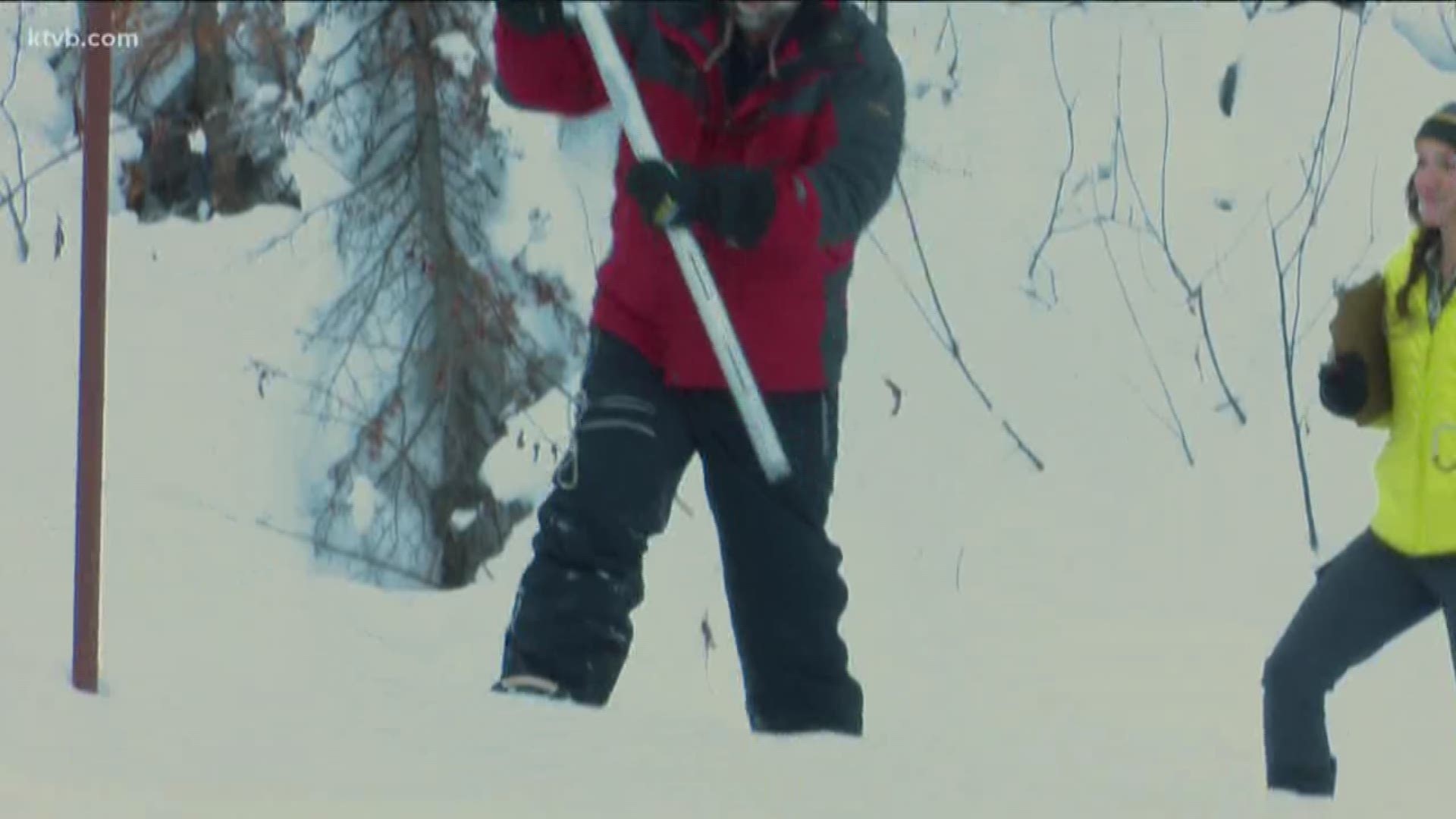With winter in full swing, a lot of people are starting to track the snowpack in Idaho’s higher elevations.
Some are hoping for great skiing and snowboarding conditions, but others have agriculture in mind.
Early Friday morning, USDA Hydrologist Ron Abramovich trekked out into the Idaho mountains to gauge how much snowpack has built up for the first survey of the season at Mores Creek Summit.
“We have a number of people watching this data, including bank loan officers, the agriculture community, recreation, winter and summer, and the hydropower companies as well," Abramovich said.
The process in the powder is simple. The survey team heads to five designated points to see how deep the snow is. Those numbers are averaged together to determine the current snowpack level.
"So what we measured today was 36 inches in the snowpack, so that is only this deep. Normally we would have about 48 inches here around January 1," reported Abramovich.
That snowpack level translates to 9.1 inches of water in the snowpack, which is well below the average of 12 inches this time of year.
“So, we are only 75 percent of normal at this site, overall the whole Boise Basin is about 70 percent of average," Abramovich said.
Historically for the Boise Basin sites, those numbers aren't great.
"We are the fifth-lowest January 1 snowpack since 1961," Abramovich said.
That number is a little concerning for farmers who depend on the snowpack to take care of their crops later in the year.
Jake Putnam with the Idaho Farm Bureau Federation explained that the numbers collected by the USDA up here play into a crucial equation.
"When we have good snowpack it melts into the reservoirs, reservoirs run into the canals, and then heads into the fields,” Putnam said. "What they want to know is how much money they should bring out of the bank for farm loans. This snow is a good indicator of what kind of year they are going to have in terms of irrigation."
Putnam said for now the data isn't alarming, but it is on the radar.
"We're thinking that we could have another one of these years where there could be hardly any snow early, but all of the sudden we could get dumped on in March," he said. "So it's hard to get that worried right now, but we are very concerned with the low snowpack numbers."
Friday was the first of five surveys taken up in the Mores Creek Summit area. Over the next four months, surveyors will head out to take a look at the snowpack.
They say they hope over the next few months the snowpack will grow higher and higher, so we have a better water year in the end.

